Gophers can transform a beautifully maintained yard into a landscape of mounds and tunnels seemingly overnight. These burrowing rodents cause extensive damage to gardens, lawns, and landscaping through their extensive underground activity. While various control methods exist, properly placed traps remain one of the most effective and environmentally responsible approaches to gopher management. This guide examines the best gopher traps on the market and provides expert advice on successful trapping techniques.
Quick Picks: Best Gopher Traps
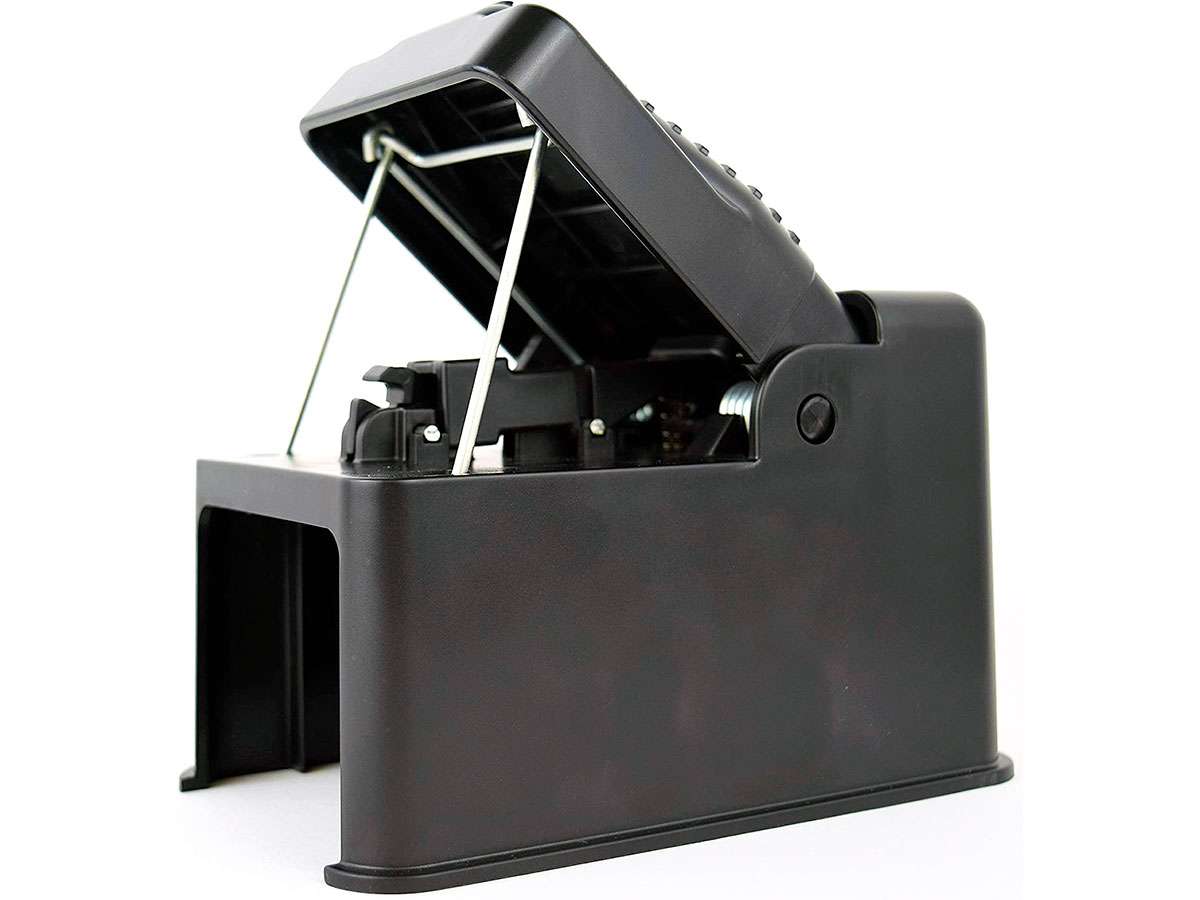
Editor’s Choice

People’s Choice

Professional Grade
- Understanding Gopher Trap Types and Their Effectiveness
- Key Factors for Successful Gopher Trapping
- Top 7 Gopher Traps Reviewed
- Step-by-Step Guide to Successful Gopher Trapping
- Enhancing Trap Effectiveness with Baits and Attractants
- Troubleshooting Common Trapping Problems
- Integrated Gopher Management Approach
- Humane Considerations in Gopher Control
- Professional Gopher Control: When to Call the Experts
- Conclusion: Creating a Gopher-Free Landscape
- Frequently Asked Questions
Understanding Gopher Trap Types and Their Effectiveness
Before investing in traps, it’s important to understand the different types available and how they work. Each trap type has specific advantages in particular situations, and understanding these differences can significantly improve your success rate.
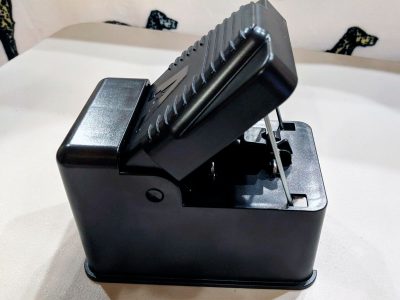
Box Traps
- Enclosed design with choker loop or spring mechanism
- Excellent for complete tunnel blockage
- Easy disposal with minimal contact
- Weather-resistant options available
- Good for wider tunnels and larger gophers

Wire Traps
- Scissor or pincer-style mechanism
- Compact design fits most tunnel sizes
- Usually requires less excavation
- Can place two in opposite directions
- Most popular style among professionals
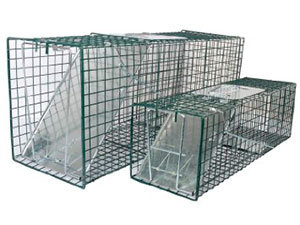
Live Traps
- Captures without killing
- One-way door mechanism
- Requires frequent checking
- Typically larger and bulkier
- Relocation may be regulated in some areas
Many professional trappers recommend having multiple trap types on hand. Different gopher populations may respond differently to various trap styles, and tunnel sizes can vary significantly. Having options allows you to adapt your approach based on initial results and specific conditions in your yard.
Key Factors for Successful Gopher Trapping
Trapping success depends on much more than just which trap you purchase. Understanding gopher behavior and proper trap placement is crucial for effective control.
| Success Factor | Best Practice | Common Mistakes |
|---|---|---|
| Timing |
|
|
| Tunnel Identification |
|
|
| Trap Handling |
|
|
| Follow-up |
|
|
Top 7 Gopher Traps Reviewed
Victor The Black Box Gopher Trap
Editor's ChoiceHow Does It Work
How to Use
- Locate an active gopher tunnel using a probe approximately 12 inches from a fresh mound
- Clear and enlarge the tunnel entrance enough to insert the trap
- Place the trap with its entrance aligned with the tunnel
- Cover the exposed parts of the trap with soil to block light
- For best results, place two traps facing opposite directions in the main tunnel
- Weather-resistant design works in all conditions
- No-see, no-touch disposal method
- Reusable for multiple seasons
- Effective without bait
- Safety features minimize risk to children and pets
- Requires larger tunnel opening than wire traps
- May be too large for smaller gopher species
- More expensive than basic wire traps
Victor Easy Set Gopher Trap
People's ChoiceHow Does It Work
How to Use
- Locate the main tunnel using a probe tool
- Carefully open the tunnel with minimal disturbance
- Set the trap according to instructions with the trigger end facing into the tunnel
- Place a second trap facing the opposite direction for maximum effectiveness
- Cover the opening with a small board or cloth to block light
- Check traps daily and reset as needed
- Slim design fits easily into tunnels with minimal digging
- Highly sensitive trigger mechanism
- Affordable price point allows for purchasing multiple traps
- Galvanized finish resists rust and corrosion
- No bait required
- Requires some practice to set correctly
- Spring can weaken over time with heavy use
- Requires more direct handling during disposal
Victor M9013 Gopher Trap
Durable DesignHow Does It Work
How to Use
- Find a main tunnel 12-18 inches from a fresh mound
- Open the tunnel with minimal disturbance
- Set the trap with the trigger facing into the tunnel
- For best results, place traps in both directions of the main tunnel
- Cover the opening loosely to block light while allowing the gopher to enter
- Secure traps with string or wire attached to a stake above ground
- Weather-resistant steel construction
- Compact size works well in smaller tunnels
- Two-pack provides better coverage
- No bait required
- Strong spring provides reliable triggering
- Can be challenging for beginners to set
- May require replacement after extended use
- Spring tension may weaken over time
Cinch Traps Medium Gopher Trap Kit
Professional GradeHow Does It Work
How to Use
- Locate a main tunnel using a probe or by excavating near a fresh mound
- Open the tunnel wide enough to insert the trap with minimal disturbance
- Set the trap according to the included instructions
- Position the trigger wires directly in the gopher's path
- Cover the tunnel opening to block light
- Secure the trap with the attached chain to prevent loss
- Check daily and reset as needed
- Professional-grade stainless steel construction
- Exceptional durability for years of use
- Highly effective sliding wire mechanism
- Works well for larger gopher species
- Made in USA with quality materials
- Higher price point than basic traps
- Requires more practice to set effectively
- May need periodic maintenance to ensure smooth operation
Macabee Steel Gopher Trap MGT
Classic DesignHow Does It Work
How to Use
- Locate a main tunnel using a probe near a fresh mound
- Create an opening into the tunnel with minimal disturbance
- Set the trap by pulling back the trigger wire and securing it
- Place the trap with the trigger facing into the tunnel
- Cover the opening to block light
- Secure with a stake and string to prevent loss
- Check daily and relocate if unsuccessful after 48 hours
- Time-tested design with proven effectiveness
- Compact size fits well in most gopher tunnels
- Relatively easy to set with practice
- Affordable price point
- No bait required
- Enameled finish may rust over time
- Can be difficult for beginners to set properly
- Less effective on larger gopher species
- May require periodic maintenance
Death-Klutch DK-1 Pocket Gopher Trap
Heavy-Duty OptionHow Does It Work
How to Use
- Locate a main gopher tunnel near fresh activity
- Create an opening large enough to insert the trap
- Set the trap by compressing the spring and securing the trigger
- Place the trap with jaws facing upward in the tunnel
- Cover the opening to exclude light
- Attach a chain and stake to prevent trap loss
- Check daily and relocate if unsuccessful after 2-3 days
- Heavy-duty stainless steel construction
- Extra-strong spring mechanism
- Effective for larger gopher species
- Durable design for long-term use
- Resistant to corrosion and rust
- Requires significant force to set
- May be challenging for those with limited hand strength
- Bulkier than some other trap options
- Higher price point than basic traps
The Gophinator Trap
Professional ChoiceHow Does It Work
How to Use
- Locate the main tunnel using a probe near fresh gopher activity
- Create an opening large enough for trap placement
- Set the trap according to manufacturer instructions
- Position the trigger in direct contact with the tunnel floor
- Cover the opening to exclude light
- Secure with a stake to prevent loss
- Check regularly and relocate if unsuccessful after 48 hours
- Superior holding power for larger gophers
- Made entirely of stainless steel for maximum durability
- Resists rust and corrosion
- Wide trigger plate for reliable activation
- Designed based on extensive field testing
- More expensive than standard traps
- May be difficult to find in retail stores
- Requires practice to set effectively
- Spring tension may need periodic adjustment
Step-by-Step Guide to Successful Gopher Trapping
Regardless of which trap you choose, following the proper procedure for setting and monitoring traps will significantly increase your chances of success. This comprehensive approach addresses every aspect of the trapping process.
Step 1: Identify Active Tunnels
Locate fresh gopher mounds, identifiable by their crescent or fan shape and moist, dark soil. Fresh activity typically shows loose soil with no vegetation growing through it. The main tunnel is usually 8-12 inches away from the plug side of the mound (the flat side of the crescent).
Step 2: Probe for the Main Tunnel
Use a garden probe (a rod with a handle) to locate the main tunnel. Starting from the plug side of the mound, insert the probe 8-12 inches out and press down. When the probe suddenly drops about 2 inches, you’ve found the main tunnel. This is where you’ll place your traps for maximum effectiveness.
Step 3: Prepare the Tunnel
Wearing gloves to minimize human scent, carefully excavate to expose the main tunnel. Create an opening just large enough to insert your trap without excessive disturbance. Keep the tunnel structure intact as much as possible to encourage the gopher to return.
Step 4: Set and Place Traps
Following manufacturer instructions, set your trap. For maximum effectiveness, place two traps facing opposite directions in the main tunnel. This approach catches gophers regardless of which direction they approach from. Secure traps with stakes or wire to prevent them from being pulled into the tunnel.
Step 5: Cover and Mark
Cover the opening with something that blocks light but doesn’t obstruct the trap mechanism—a small piece of cardboard, cloth, or sod works well. Gophers are sensitive to light and air in their tunnels and will work to seal any openings. Mark trap locations with flags or stakes for easy monitoring.
Step 6: Monitor and Adjust
Check traps daily for captures. If a trap remains empty after 48 hours, relocate it to another active tunnel. Persistence is key—successful trapping may require multiple placements and adjustments. Continue trapping until no new mounds appear for at least two weeks.
For yards with extensive gopher activity, establish a systematic trapping approach. Divide your property into sections and focus on one area at a time. Once an area is clear of activity for two weeks, move to the next section. This methodical approach prevents gophers from one area recolonizing sections you’ve already cleared. Map and mark trap locations to track progress and identify patterns in gopher movement.
Enhancing Trap Effectiveness with Baits and Attractants
While most gopher traps don’t require bait to function effectively, adding attractants can sometimes improve catch rates, especially for traps that have been in place for several days without success.
| Bait/Attractant | Best Used With | Application Method |
|---|---|---|
| Fresh Vegetation | Box traps, wire traps | Place small pieces of fresh vegetables (carrots, lettuce, alfalfa) behind the trigger mechanism |
| Peanut Butter | Box traps, live traps | Apply a small amount directly to the trigger plate or mechanism |
| Apple Slices | All trap types | Place small fresh pieces near the trigger or inside live traps |
| Commercial Gopher Attractant | All trap types | Apply according to manufacturer’s instructions, typically near the trigger |
| Anise Oil | All trap types | Place a few drops on a cotton ball near the trap trigger |
While baits may occasionally improve trapping success, they aren’t necessary in most cases. Gophers primarily respond to tunnel disturbances rather than food attractants. Using too much bait or applying it incorrectly can actually reduce trap effectiveness by making gophers suspicious or by interfering with the trap mechanism. When in doubt, a properly placed trap without bait is often more effective than an improperly baited trap.
Troubleshooting Common Trapping Problems
Even with the best equipment and techniques, gopher trapping doesn’t always go as planned. Here are solutions to common challenges you might encounter:
Traps Getting Filled With Soil
- Place traps farther into the main tunnel
- Ensure trap is level with tunnel floor
- Try a different trap style (box vs. wire)
- Check that you’re in a main tunnel, not a lateral
- Minimize soil disturbance during placement
Sprung Traps With No Capture
- Check for proper trap sensitivity adjustment
- Ensure trap is properly positioned in tunnel
- Clean traps thoroughly between uses
- Try a different trap type or size
- Consider using trap with larger trigger plate
No Gopher Activity at Traps
- Verify you’re targeting fresh, active mounds
- Consider seasonal activity patterns
- Check for alternative tunnel entries/exits
- Relocate traps every 48-72 hours
- Try different trap types or sizes
Integrated Gopher Management Approach
While trapping is highly effective, combining multiple control methods creates a comprehensive gopher management strategy that yields the best long-term results.
Preventative Landscaping
Create gopher-resistant gardens by installing underground hardware cloth barriers around valuable plantings. Use raised beds with wire mesh bottoms to protect vegetable gardens. Consider planting gopher-resistant plants like lavender, salvia, and California poppy in border areas.
Natural Predators
Encourage natural gopher predators by installing owl boxes and creating habitat for snakes, hawks, and other predatory birds. Maintaining predator-friendly areas can significantly reduce gopher populations over time without human intervention.
Sonic Repellents
While scientific evidence is mixed, some gardeners report success with solar-powered sonic stakes that emit vibrations gophers find irritating. These can be useful as part of a broader strategy, particularly in areas where trapping has already reduced populations.
Create a year-round management plan that adjusts to seasonal gopher activity patterns. Focus intensive trapping during spring and fall when gophers are most active and breeding. Use preventative measures like barriers and repellents during summer and winter when activity may temporarily decrease.
Humane Considerations in Gopher Control
While many homeowners prioritize effective and immediate gopher removal, others may have concerns about humane treatment. Here are considerations for those seeking more humane approaches:
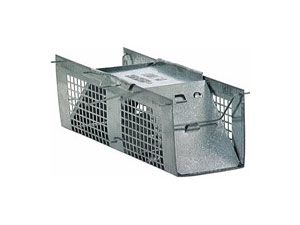
Live Trapping
- Capture without killing using one-way door mechanisms
- Requires frequent monitoring (check every 4-6 hours)
- Need appropriate relocation site (check local regulations)
- Less success rate than lethal traps
- More labor-intensive process
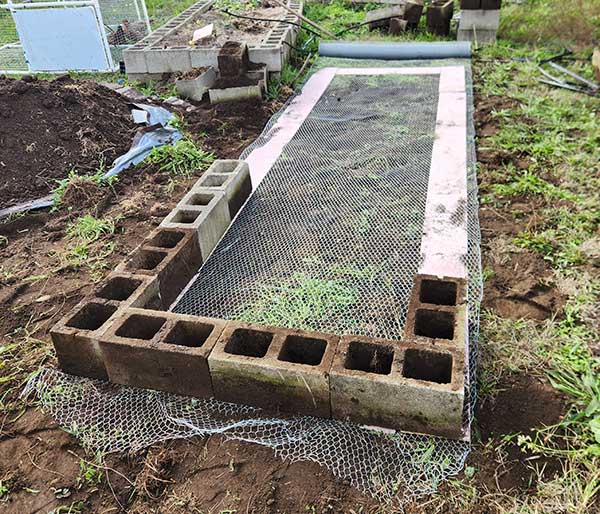
Exclusion Methods
- Underground barriers (hardware cloth, gopher wire)
- Gravel trench perimeters around key planting areas
- Raised beds with protective bottom barriers
- Plant selection focusing on gopher-resistant species
- Preventative rather than reactive approach
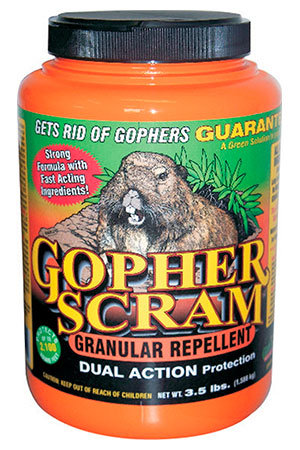
Repellents
- Castor oil-based formulations
- Strong-smelling plants (garlic, castor bean)
- Sonic/vibration devices
- Variable effectiveness depending on conditions
- May require frequent reapplication
If opting for live trapping, check local regulations before relocating gophers. Many jurisdictions prohibit releasing certain wildlife species, including gophers, due to concerns about disease transmission and agricultural damage. Additionally, relocating to unsuitable habitat can result in stress, suffering, or death for the animal, sometimes less humane than lethal control methods.
Professional Gopher Control: When to Call the Experts
While DIY trapping is effective for many homeowners, some situations warrant professional assistance. Consider contacting a professional pest control service in these scenarios:
Extensive Infestations
Properties with dozens of active mounds or multi-acre landscapes may benefit from professional-grade equipment and systematic approaches that can address large-scale problems more efficiently than individual homeowners.
Persistent Problems
If multiple DIY attempts have failed to resolve your gopher issues, professionals can identify factors you may have overlooked, such as unusual tunnel patterns, soil conditions, or possible misidentification of the pest species.
High-Value Landscapes
Properties with extensive landscaping investments, rare plants, or specialized gardens may warrant the precision and expertise that professionals provide to minimize damage to valuable plantings during the control process.
Professional Trapping
- Systematic property-wide approach
- Access to commercial-grade equipment
- Experience identifying optimal trap placement
- Efficient removal of multiple gophers
- Often includes follow-up monitoring
Professional Baiting
- Access to restricted-use rodenticides
- Precise application methods
- Knowledge of appropriate bait types/amounts
- Safety protocols to protect non-target species
- Often combined with exclusion methods
Prevention Planning
- Custom property assessment
- Identification of vulnerable areas
- Barrier installation recommendations
- Gopher-resistant planting strategies
- Long-term management solutions
Conclusion: Creating a Gopher-Free Landscape
Successfully managing gophers requires patience, persistence, and a strategic approach. By selecting the right traps for your situation, learning proper placement techniques, and integrating multiple control methods, you can protect your yard from these destructive pests.
Remember that gopher control is rarely a one-time event. Maintaining a gopher-free property typically requires ongoing monitoring and periodic intervention as new gophers attempt to establish territory in your yard. However, with the right tools and knowledge, you can significantly reduce or eliminate gopher damage and enjoy your outdoor spaces without the frustration of constantly appearing mounds and damaged plants.
For best results, make gopher trapping a regular part of your property maintenance routine. Keep several quality traps on hand, check your yard weekly for signs of new activity, and address any fresh mounds immediately. This proactive approach will prevent small gopher problems from developing into major infestations.
Frequently Asked Questions
How many gophers typically live in a residential yard?
Most residential yards typically host 1-3 gophers per quarter acre. While this number seems small, a single gopher can create 10-30 mounds per month and tunnel hundreds of feet, causing significant damage.
Female gophers can produce up to three litters per year with 5-6 young each, so addressing infestations quickly is important to prevent population growth.
How long should I leave a trap in place before relocating it?
If a trap hasn’t captured a gopher within 48-72 hours, it’s generally best to relocate it to another active tunnel. Gophers typically investigate tunnel disturbances within the first day.
Extended periods without activity suggest the tunnel may be abandoned or the trap improperly placed. Professional trappers often check and reset traps daily to maximize efficiency.
Are gopher traps dangerous to pets or children?
When properly set underground in gopher tunnels, most traps pose minimal risk to pets and children. However, always keep trap locations marked and supervised when using in areas accessible to children or pets.
Box-style traps offer additional safety benefits as their mechanisms are fully enclosed. For homes with curious pets or young children, consider using traps with safety features or enclosed designs.
What’s the best season for gopher trapping?
Spring and fall typically yield the best trapping results as these seasons correspond with peak gopher activity and breeding periods. In spring, soil is often moist and workable, making tunnel location easier.
However, gopher control can be conducted year-round in most climates, with seasonal adjustments to technique based on soil conditions and activity patterns. Winter can be effective in regions without ground freeze, as food sources are more limited.
How can I tell if I have gophers or moles?
Gopher mounds are crescent or horseshoe-shaped with a plugged hole typically to one side. The soil in gopher mounds appears finely sifted with few clumps. Gophers create soil plugs to close tunnel openings.
Mole mounds are more conical or volcano-shaped without a visible entrance hole, and the soil appears clumpier. Moles leave open surface tunnels visible as raised ridges across lawns. Additionally, gophers are herbivores that damage plant roots, while moles primarily eat insects and earthworms. In terms of habitat, gophers tend to create extensive burrow systems underground, which can be detrimental to garden plants, while moles prefer moist environments and often refrain from being seen above ground. The gopher and mole comparison reveals significant differences in their behavior and dietary preferences, ultimately influencing how they interact with their ecosystems. Understanding these distinctions is crucial for gardeners and landowners looking to manage these critters effectively.
Do gopher traps need to be baited?
Most gopher traps don’t require bait to be effective. Gophers are primarily triggered to investigate and clear blocked tunnels, making proper trap placement more important than baiting.
However, if initial trapping attempts are unsuccessful, adding small amounts of fresh vegetables (carrots, sweet potatoes) or peanut butter near the trigger mechanism may increase success rates. Avoid using too much bait, as this can make gophers suspicious or allow them to spring traps without being caught.
How deep should I place gopher traps?
Gopher traps should be placed in main tunnels, which typically run 6-12 inches below the surface. The most effective placement is in horizontal main tunnels, not in the vertical tunnels that lead directly to mounds.
Use a probe tool to locate the main tunnel, which will typically be found 8-12 inches away from the plug side of fresh mounds. When you feel the probe suddenly drop about 2 inches, you’ve located a tunnel where traps should be placed.
Why do gophers keep returning to my yard even after trapping?
Gophers are territorial, but new gophers will quickly move into vacant tunnels and territory once the resident gopher is removed. This is especially true in areas with high gopher populations or if your property offers attractive food sources.
For long-term control, combine trapping with exclusion methods like underground barriers around valuable planting areas. Consider implementing a regular monitoring program to catch new invaders quickly before they establish extensive tunnel systems.
Can I flood gopher tunnels instead of trapping?
Flooding tunnels is rarely effective as a standalone control method. Gophers have evolved to deal with occasional flooding in their natural environment and often simply move to higher tunnel sections or temporarily exit until water recedes.
However, flooding can sometimes be useful as a way to locate tunnel systems (by observing where water emerges) or in combination with trapping by forcing gophers to investigate blocked tunnels. Be aware that excessive flooding may damage soil structure and plant roots.
How quickly do gopher populations reproduce?
Gophers reproduce rapidly under favorable conditions. A single female pocket gopher can produce 1-3 litters per year with an average of 5-6 young per litter. Young gophers can begin breeding at just a few months of age.
This reproductive capacity means that failing to address even a small gopher population can quickly lead to significant infestations. Consistent control measures throughout the year are important for preventing population rebounds.
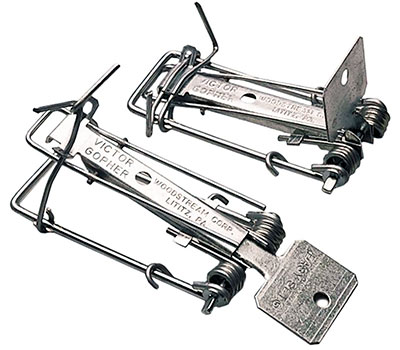
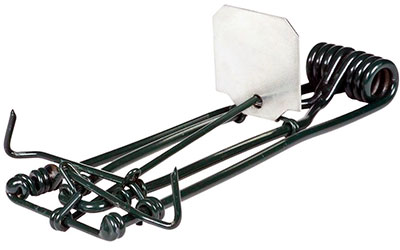
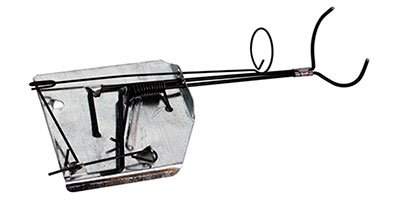
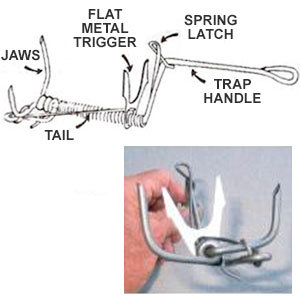
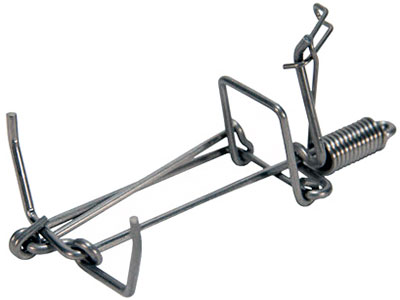
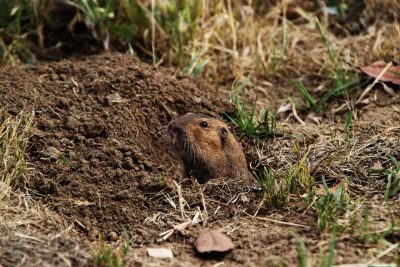



I’m in Central FL, have caught 4 gophers in about 4 weeks using the Victor Easy Set trap. More to go, work intensive but gotta keep digging for new tunnels.
I’ve been trapping gophers since I was 8 years old and am 74 now. Never had a problem but now it’s changed. Still trapping the same way. Dig to main runway, set trap in both directions and cover them up. Not much luck. Yards are a mess. Using the same wire traps as a kid. Use to catch them within a day or two. Something’s changed? They must be going to private school rather than public school! Gopher hawk is a complete wast of money. It went in the trash!
Have you tried the newer traps……. they look like a cloths pin…..but I forgot the name of them. Have next to 100% luck with them. Easy to set…….ones you learn how. If your interested I can try to find the name of the trap.
You recommend the use of WD-40 to keep the trap rust free, but this is not a good idea, since gophers do not like the scent of petroleum. Keep as much human scent off the trap as possible. Gopher scent from previous trappings is not a problem.
I have used the the Gophinator for a number of years (7) now and can say they work much better then the others. I get almost 100% results with this trap. It works for the jumbo, large, medium and small gophers. For the junior gophers use the Gophinator mole traps (same trap only smaller). I have trapped hundreds of gophers with these traps, and yes, I have used the others, but the Gophinator is by far the best.
One more trick, always “bait” the end of the hole with a little bit of peanut butter (1/2 to 1 tea.) before closing the hole up with the trap in front of the bait. The gopher cannot help itself in trying to get to the peanut butter.